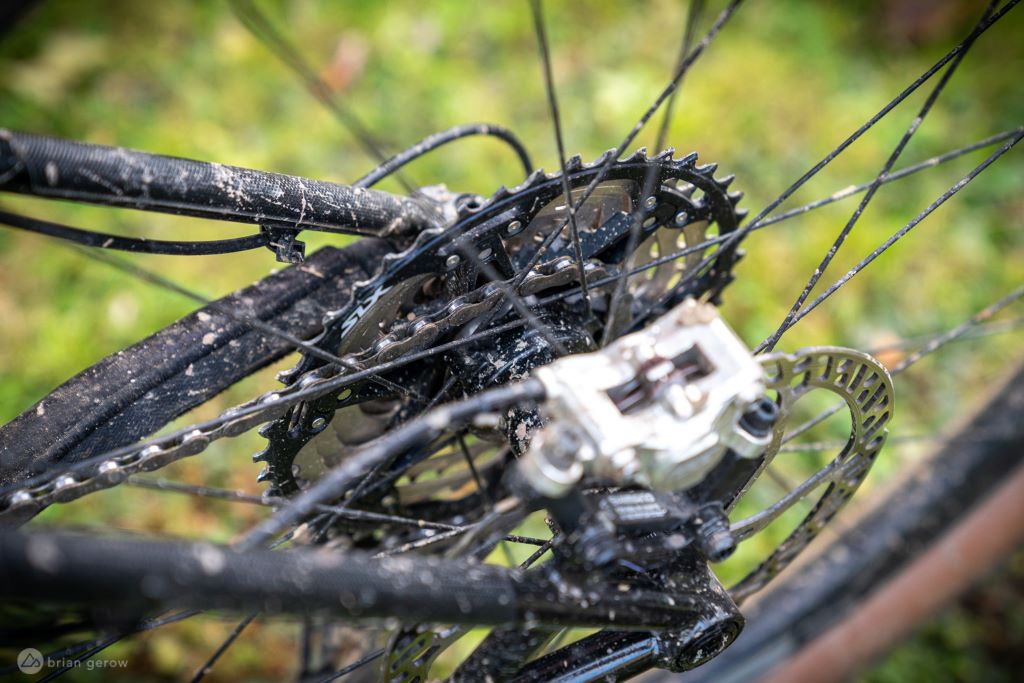Mountain biking is an exhilarating sport that allows you to experience nature’s beauty while challenging yourself physically. However, a frustrating scenario can arise amidst the thrill of navigating trails and conquering obstacles: untangle a mountain bike chain.
A tangled chain can disrupt your ride, leaving you stranded and frustrated. This comprehensive guide provides step-by-step instructions on how to untangle a mountain bike chain effectively, ensuring you get back on track quickly.
Untangle a Mountain Bike Chain: Understanding the Mechanics of a Bike Chain
Before we dive into the untangling process, it’s important to understand the basic mechanics of a bike chain. The chain consists of interconnected links that engage with the teeth of the chainring (front cog) and cassette (rear cogs). The derailleur system guides the chain smoothly between the cogs as you shift gears.
Untangle a Mountain Bike Chain: Tools Required
Before you start untangling your chain, gather the following tools:
- Gloves: Protect your hands from grease and grime
- Chain lubricant: For re-lubricating the chain after untangling
- Rag or paper towels: For cleaning excess grease
- Multi-tool or pliers: These may be needed in case of a stubborn chain
Step-by-Step Guide to Untangle a Mountain Bike Chain
1. Assess the Situation
- Safety First: Ensure your bike is stable and secure. If possible, use a bike stand or lean it against a sturdy object.
- Identify the Tangle: Carefully examine the chain to pinpoint the location and severity of the tangle.
2. Shift to the Smallest Cogs
- Easiest Access: Shifting both the front and rear derailleurs to the smallest cogs provides the most slack in the chain, making it easier to work with.
3. Disengage the Chain (If Necessary)
- Quick-Release Lever: If the tangle is severe or the chain is jammed, you may need to disengage the chain.
- Locate the quick-release lever on the rear wheel’s axle.
- Open the lever and carefully pull the rear wheel forward to release the chain tension.
4. Untangle the Chain
- Patience and Precision: Untangling a chain requires patience and a gentle touch. Avoid using excessive force, as it can damage the chain or other components.
- Manual Manipulation: Use your fingers to carefully separate the tangled links and guide them back into their proper position.
- Tool Assistance (If Necessary): If the tangle is particularly stubborn, you can use a multi-tool or pliers to pry apart the links gently.
5. Re-engage the Chain (If Disengaged)
- Align the Chain: Carefully guide the chain back onto the smallest cogs on both the front and rear derailleurs.
- Close the Quick-Release Lever: Ensure the lever is securely closed and the rear wheel is properly aligned.
6. Test the Chain
- Smooth Operation: Rotate the pedals backward to check if the chain moves freely and smoothly through the drivetrain.
- Shift Through Gears: Shift through all the gears to ensure the chain engages properly and there are no further issues.
7. Clean and Lubricate
- Remove Excess Grease: Use a rag or paper towel to wipe off any excess grease or grime from the chain.
- Apply Lubricant: Apply a suitable chain lubricant to ensure smooth operation and prevent rust.
Untangle a Mountain Bike Chain: Tips for Preventing Chain Tangles

- Regular Maintenance: Keep your bike clean and well-maintained. Regularly inspect the chain for wear and tear, and replace it if necessary.
- Proper Shifting: Avoid cross-chaining (shifting to the largest cog in the front and the largest cog in the rear, or vice versa), as this puts excessive strain on the chain and increases the risk of tangles.
- Smooth Terrain: When riding on rough or technical terrain, try to maintain a consistent pedaling cadence to minimize chain slack and reduce the chance of the chain bouncing off the cogs.
Troubleshooting Common Chain Issues
- Chain Skipping: This can be caused by a worn chain, worn cassette, or misaligned derailleurs. Consult a bike mechanic for diagnosis and repair.
- Chain Suck: This occurs when the chain gets pulled into the gap between the chainring and the frame. This can be caused by a bent chainring or a damaged front derailleur. Seek professional assistance to resolve this issue.
Details about Bike Chain Protectors : Mountain Bike Chain Protectors: A Vital Gear for Every Trailblazer
Conclusion
Untangling a mountain bike chain may seem daunting at first, but with the right tools, patience, and a systematic approach, you can easily overcome this obstacle. Remember, regular maintenance and proper shifting techniques can significantly reduce the risk of chain tangles, allowing you to focus on enjoying your ride.
If you encounter persistent chain issues or are unsure about any step of the untangling process, don’t hesitate to consult a qualified bike mechanic.
Bike Chain Cleaning Tips: How to Clean a Mountain Bike Chain: A Comprehensive Guide
Additional Tips
- Carry a Chain Tool: It’s always a good idea to carry a chain tool with you on your rides, as it allows you to remove and reinstall the chain if necessary.
- Practice at Home: If you’re new to bike maintenance, practice untangling a chain at home in a controlled environment before attempting it on the trail.
- Watch Instructional Videos: There are many helpful videos available online that demonstrate how to untangle a bike chain.
Remember, the key to untangling a bike chain is to remain calm and patient. By following the steps outlined in this guide and utilizing the provided tips, you’ll be well-equipped to handle any chain-related challenges that come your way.
Disclaimer
This article is intended for informational purposes only and should not be considered a substitute for professional bike maintenance advice. If you have any concerns about your bike’s condition or are unsure about any repair procedures, consult a qualified bike mechanic.

Welcome to outdoorxsports.com! I’m Russell, your guide to the awesome world of mountain biking. This blog is all about building a community of riders who love to share their passion for the sport. Expect inspiring stories, local trail recommendations, fun challenges, and tips for making the most of your time on two wheels.

